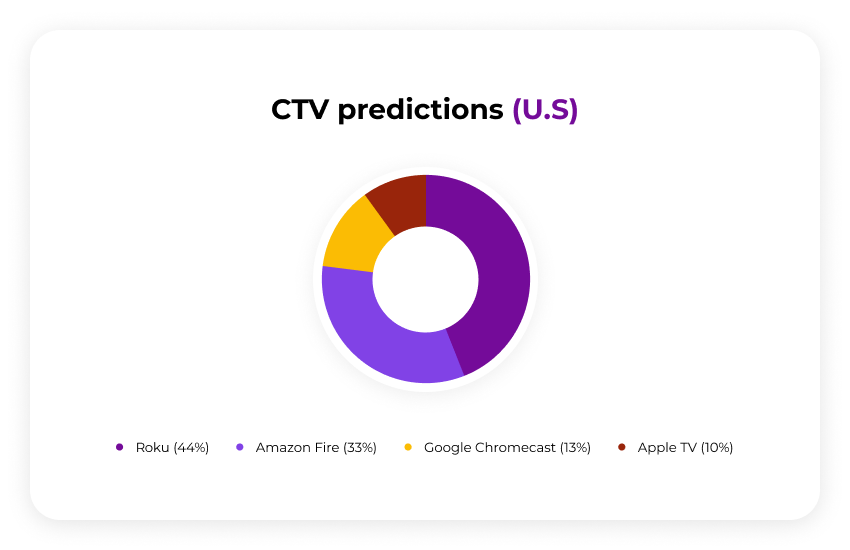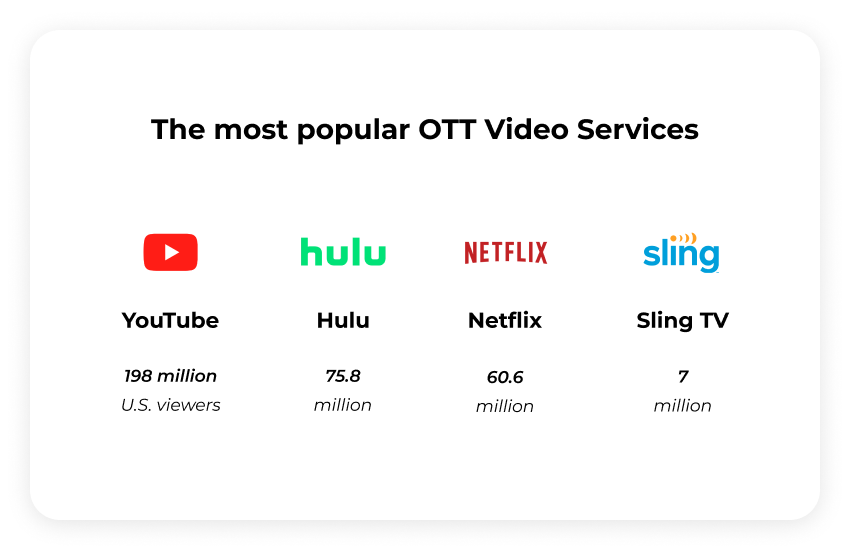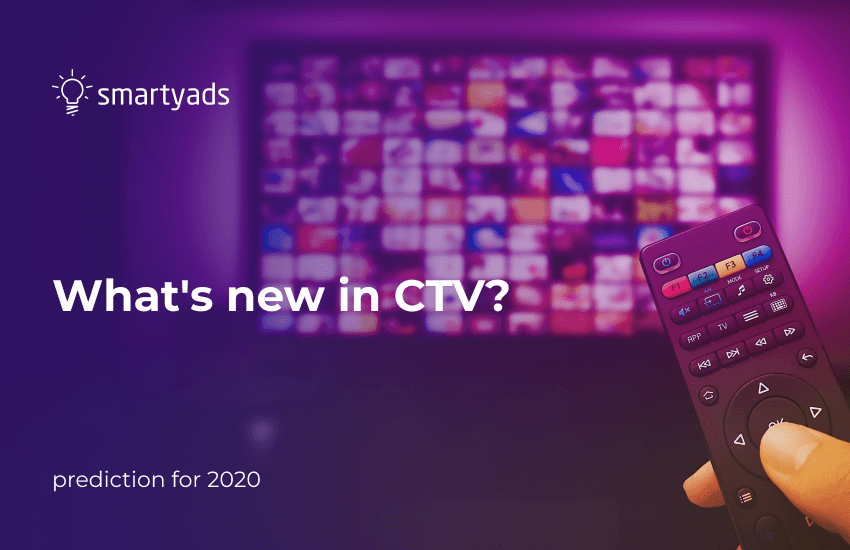Throughout recent years, we could observe a shift in the consumption of video content towards on-demand, which includes content that viewers can watch on connected TV (CTV). This can be a Smart TV, game console or other device connected to the Internet which allows users to make their own choices considering the content they watch. It is estimated that by 2020, the users will spend half of all video-consumption time on content that they choose themselves. Although linear TV will continue to occupy a significant part of consumers’ lifetime, the tendency to reduce the time spent on watching broadcast TV becomes clear. One should also note that younger people tend to choose video-on-demand more often.
Current ad streaming landscape
Although some advertisers are still unaware of the potential benefits of CTV, its tendency to grow becomes more and more striking. According to Emarketer, CTV media spending is estimated to reach $6.94 billion in the U.S by 2019, and by 2023 this number will grow to $14.1 billion. Moreover, by the end of 2019 CTV is expected to gain 195.1 million viewers and by 2020 there will be over 200 million users who choose this type of media.
Among the most popular streaming devices, Roku takes the first place with around 44% of viewers. It is then followed by Amazon Fire TV with 33%.

Google Chromecast and Apple TV close this list with 13% and 10% of viewers respectively. As for over-the-top(OTT) video services an absolute leader is YouTube with 198 million U.S. viewers. Hulu reached 75.8 million, and Netflix gets very close with 60.6 million viewers. Finally, 7 million viewers have chosen Sling TV.

Benefits for publishers and advertisers
Okay, so connected TV is growing, but how could it possibly change the world of programmatic advertising powered by real-time bidding? And what’s in it for advertisers and publishers?
Well, first of all, since users usually watch TV at home, the advertising provided by CTV gets seen by more than one person. This is an extremely beneficial opportunity and it is only provided by CTV, but it is not the end of list. According to a recent study by Magna and Roku, OTT platforms showed 67% better effectiveness at driving purchase intent compared to ads broadcasted on linear television. Moreover, the same study showed that these platforms needless exposure to generate the impact compared to linear TV. Those numbers alone are already compelling, but let us now have a look at certain benefits of CTV for publishers and advertisers.
How to make most out of CTV in 2020
So we can see that CTV will become one of the fastest developing areas for advertising, it will also bring unique benefits for both advertisers and publishers. As expected, CTV advertising will reach its full potential by 2020, so isn’t it just the right time to jump in! SmartyAds media-buying solutions, always provide an opportunity to be at the forefront of marketing trends with innovative and dynamic formats like Connected TV. With our updated DSP you can now launch a campaign on any Internet-powered Smart TV device. This innovative feature allows you to reach customers through multiple СTV environments and provide unique targeted impressions. With just 3 steps you can start advertising to reach any location: sign up on the DSP, create a campaign, and manage it in real-time.




